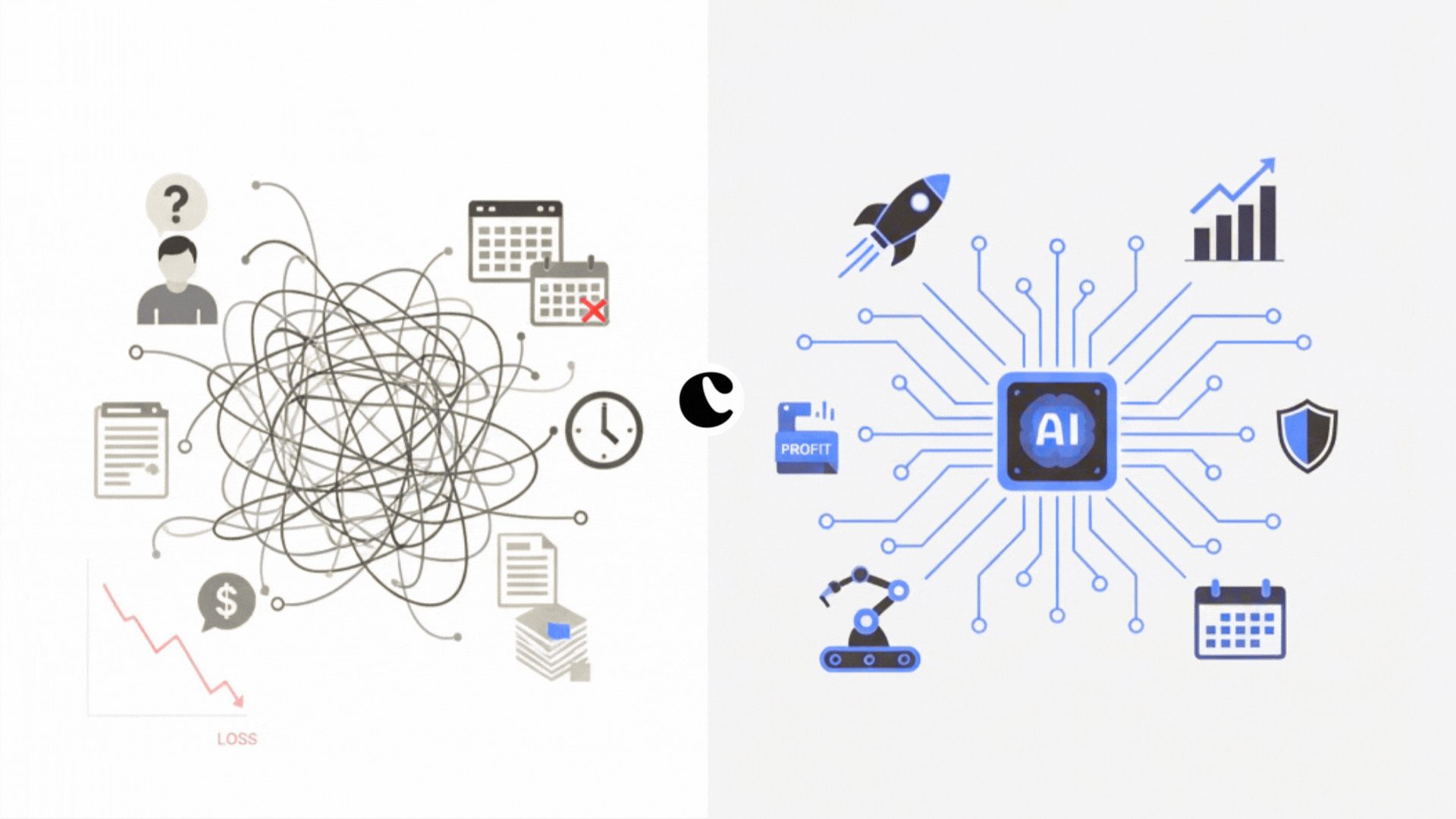Nov 18, 2025 | Couture AI Team
Let’s face it - if your retail merchandising team still depends on Excel sheets, static planograms, or a never-ending chain of approvals, you’re somehow losing revenue you don’t even see.

Manual merchandising may have served retail for decades, but in today’s fast-moving, data-driven world, it’s quietly eroding your profits.
Every misplaced SKU, delayed assortment update, or missed trend compounds into measurable losses - and most retailers don’t even realize how much it’s costing them.
Here’s the real scene:
Manual merchandising slows your teams down and directly impacts your margins.
According to a report, retailers lose nearly $125 billion in sales annually due to poor or misplaced visual merchandising. That’s roughly 3.3% of all physical retail sales in the U.S.
Similarly, a research study revealed that over 70% of retailers experience a loss of around 5% in revenue due to in-store inefficiencies, such as planogram errors, out-of-stock items, and non-compliant displays.
For a retailer generating $500 million annually, that’s an estimated $25 million in preventable loss - all because of outdated merchandising processes.
And thus, these inefficiencies are distributed across stores and regions, often going overlooked until it’s too late.
Retail used to follow predictable patterns. Doesn’t work anymore.
Yet, many retail teams are still using tools and workflows built for yesterday’s pace - and it’s costing them more every year.
Here’s why:
A recent BCG survey of 350 merchandising leaders in 2025 says the majority of retailers and their current processes are far from what’s required for future merchandising, with around 40% of a merchandiser’s time spent on manual tasks
AI merchandising is where predictive analytics, real-time data, and automation are incorporated to optimize every shelf, price, and promotion.
AI merchandising is what empowers your team, like giving your merchandisers a live radar that shows what’s selling, where, and why.
Even traditional retail chains now utilize AI to determine which products warrant premium shelf space, resulting in higher sales velocity with fewer errors.
Retail loss is more than theft or returns. It’s also:
When merchandising relies on guesswork, these problems multiply.
AI-driven systems can pinpoint where and why these losses occur. For instance:
Smart consumers expect retailers to “understand” them - both online and in-store.
They want shelves (or product grids) that anticipate their needs, not just react to them.
That’s where AI merchandising shines. It interprets customer behavior, predicts trends, and fine-tunes assortments continuously - allowing what’s called an autonomous shopping experience.
Manual merchandising can’t keep up with that level of personalization or agility.
Switching from manual to AI-powered merchandising is reclaiming lost revenue and building long-term agility.
In short: less manual chaos, more strategic impact.
Manual merchandising is old-fashioned, and to be honest, it’s too expensive. And every week your team delays automation, your competitors are getting further ahead.
AI merchandising, you’re not only saving costs perhaps creating precision, responsiveness, and a seamless omnichannel experience.
Couture.ai helps retailers move above manual merchandising to build intelligent, data-driven, and autonomous systems that minimize loss and maximize margin.
Schedule a free demo with Couture.ai today to see how AI can eradicate inefficiencies and open the next door to retail profitability.
Subscribe to get the latest updates and trends in AI, automation, and intelligent solutions — directly in your inbox.
Stay Informed: Insights and Trends from Couture AI
Join the AI revolution and elevate your retail experience with Couture AI.